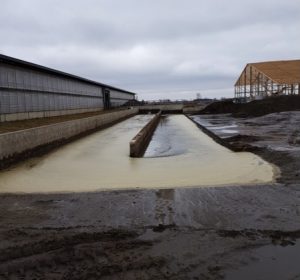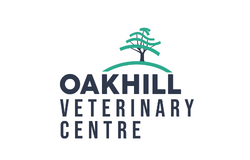 In January, I headed over to Indiana, Indianapolis as part of a trip organised by Elanco to visit some dairy farms in the surrounding area. 6 vets and 6 farmers from across the UK attended, visiting 7 dairy farms followed by a day of lectures at Elanco HQ covering dairy economics and the American dairy industry.
In January, I headed over to Indiana, Indianapolis as part of a trip organised by Elanco to visit some dairy farms in the surrounding area. 6 vets and 6 farmers from across the UK attended, visiting 7 dairy farms followed by a day of lectures at Elanco HQ covering dairy economics and the American dairy industry.
We saw a variety of farms during the week from 250 cows to 15,000 spread over 5 adjacent farms, 
though most were around 1200 cows. Rainfall was similar to Lancashire with farms receiving 60” rain a year but had temperatures of 35+°C to deal with in summer. All units milked 3 times a day and yields varied from 36-43 kg/day. Nutrition obviously played a role in this yield, diets were very consistent; maize and alfalfa based. However, all farmers cited improvements to cow comfort as the major reason for increase in yield and this had become central to any decisions made to the cow environment, in one case they had improved from 30 to 40kg by moving into a new cow building and onto sand bedding.
 However, increasing stocking density on one farm to 110% to prepare for expansion had reduced yield by 3kg/cow. Sand was the predominant bedding system and was reclaimed using a sand lane system where the slurry was effectively washed repeatedly in a channel, the gradient of the channel meant that the sand settled out and could be removed before being reused after around 6 weeks.
However, increasing stocking density on one farm to 110% to prepare for expansion had reduced yield by 3kg/cow. Sand was the predominant bedding system and was reclaimed using a sand lane system where the slurry was effectively washed repeatedly in a channel, the gradient of the channel meant that the sand settled out and could be removed before being reused after around 6 weeks.
 Did you know?
Did you know?
There are currently 9.4 million dairy cows in the US with 1.8 million in California, average herd size is 232 with smaller farms found on the east coast where farming would be more similar to the UK. By 2025 50% of milk production is expected to come from farms >1000 cows. Average yield is predicted to increase by 1.9%/year for the next 10 years mainly from technological advances. The liquid market in the US is in slight decline but the market is mainly thought to be driven by cheese squares for burgers!
All farms had cooling systems for the cows consisting of fans and soakers, often in the UK we only think of  temperatures getting hot enough to use these systems for a few days in the summer. However, fans switched on at 15-18°C and soakers at 21°C, with farmers reporting a clear benefit at these temperatures.
temperatures getting hot enough to use these systems for a few days in the summer. However, fans switched on at 15-18°C and soakers at 21°C, with farmers reporting a clear benefit at these temperatures.
Whilst we don’t see the extreme heat where these systems really benefit cows, we certainly have many days high teens/early 20’s and we often see fertility dropping off across the practice during these periods.
 During the trip we had the opportunity to visit a large robot farm, 36 robots housed under one roof! The cows were grouped in 180’s with 3 robots to each group, averaging 36kg/day. The shed was ventilated using 100 fans situated down one side of the shed drawing air through. The unit cost roughly $7000/stall to build and he plans to install another 12 robots in the next few years. The calf rearing part of the enterprise was even more impressive. Calves were reared in groups of 60 on automatic feeders and used whole milk with a protein supplement, at 3 weeks they were drinking 13 litres on average and were 120kg bodyweight at 9 weeks of age.
During the trip we had the opportunity to visit a large robot farm, 36 robots housed under one roof! The cows were grouped in 180’s with 3 robots to each group, averaging 36kg/day. The shed was ventilated using 100 fans situated down one side of the shed drawing air through. The unit cost roughly $7000/stall to build and he plans to install another 12 robots in the next few years. The calf rearing part of the enterprise was even more impressive. Calves were reared in groups of 60 on automatic feeders and used whole milk with a protein supplement, at 3 weeks they were drinking 13 litres on average and were 120kg bodyweight at 9 weeks of age.
Control of disease was helped by only having a 5 day spread of age in the groups. Heifers calved at 21 months at 535kg.
Most farms had heifers reared off farm from a few months of age to allow them to utilise the farm for more cows, one farm sent calves 1200 miles to Texas at 3 days old for rearing. A strong emphasis on all farms was also placed on fertility and heifer rearing. Preg rate was the main metric used to monitor performance with farms all aiming for 20%+. Good fertility and calf performance allowed farms to more selective with culling and have a more productive/profitable herd, cull rates ran at 35-40%. Attention to detail set the better farms apart with each process on farm assessed to see if there was a more efficient way.
One interesting feature on the largest farm Fair Oaks was the visitor centre, attracting 600,000 visitors a year, as part of the farm tour they had a glass fronted calving gallery where there was always a cow calving visitors could watch!
The main message from the American producers was improving cow comfort and the cow environment had been the main factor in improving production and animal health.
The other key thing that I took away from the trip was that aggressive fertility management improved farm profitability through more efficient milk production.
Andy Bramall
Oakhill Farm Vet
